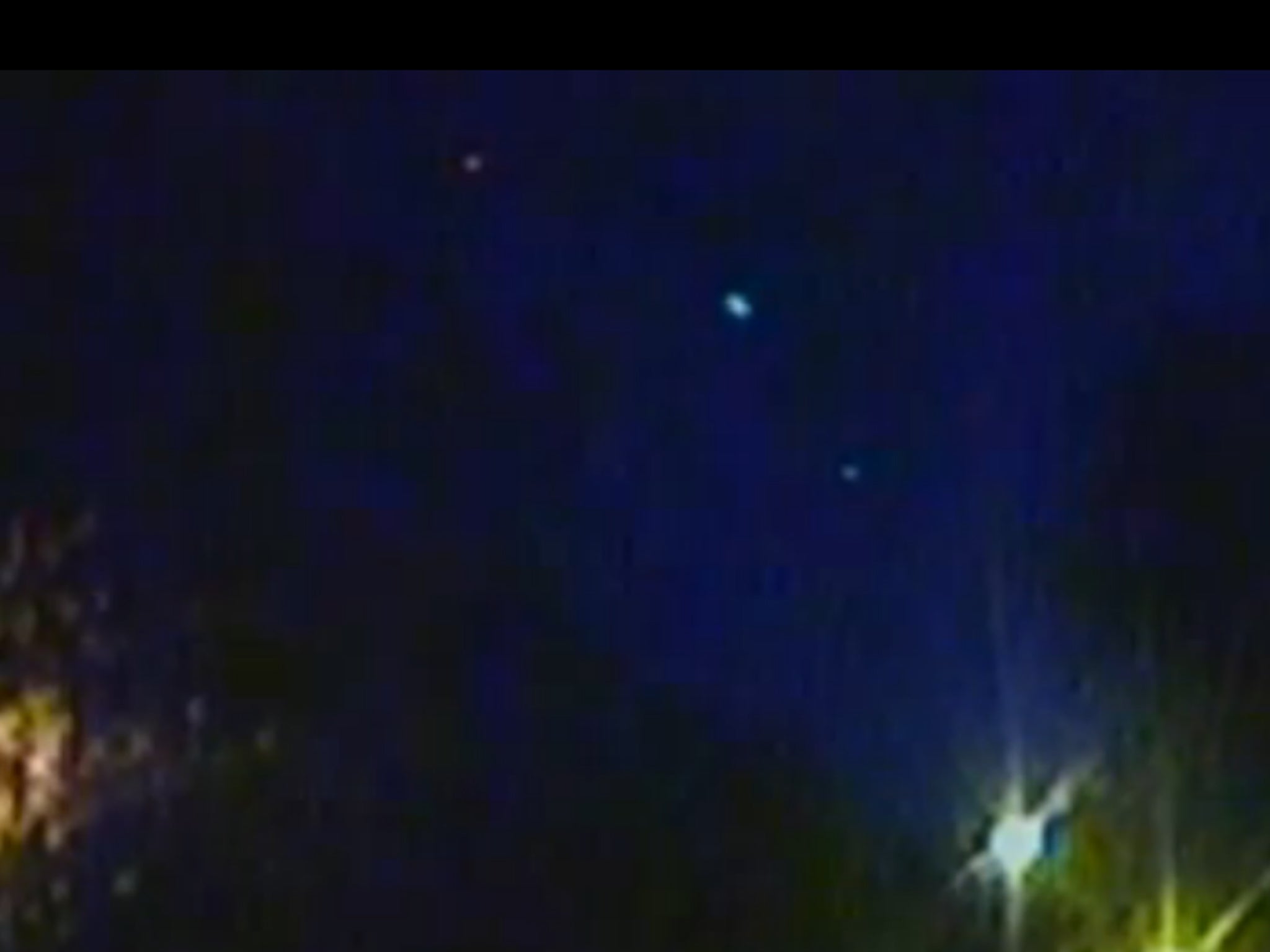Video: Large green 'fireball' meteor seen shooting across sky above England and Wales
Fist-sized fireball likely to be formed from debris from Halley's Comet

Your support helps us to tell the story
From reproductive rights to climate change to Big Tech, The Independent is on the ground when the story is developing. Whether it's investigating the financials of Elon Musk's pro-Trump PAC or producing our latest documentary, 'The A Word', which shines a light on the American women fighting for reproductive rights, we know how important it is to parse out the facts from the messaging.
At such a critical moment in US history, we need reporters on the ground. Your donation allows us to keep sending journalists to speak to both sides of the story.
The Independent is trusted by Americans across the entire political spectrum. And unlike many other quality news outlets, we choose not to lock Americans out of our reporting and analysis with paywalls. We believe quality journalism should be available to everyone, paid for by those who can afford it.
Your support makes all the difference.People from as far afield as Cornwall and Lancashire have reported seeing a green-tinged meteor hurtling across the night sky.
The 'fireball' shot over England and Wales in a northerly direction at around 9.45pm last night, with sightings reported in Cornwall, Hampshire, Lancashire, South Wales and Worcestershire.
Experts believe that the meteor was formed from debris from Halley's Comet and that it was probably only the size of a clenched fist. The green hue is likely from copper inside.
Suzy Buttress, of Basingstoke in Hampshire, said she spotted the celestial body while driving along the M3.
She wrote on Twitter: "I have just seen the biggest meteor in my life! It was also noticeably green, and appeared very large compared to regular meteors I've seen."
Louise Darnell also reported the unusual event on the social networking site.
She wrote: "Seen the brightest and lowest shooting star ever! It was definitely a UFO..??"
Reports suggested the meteor crossed Britain from the South East towards the North West.
Space scientist Maggie Aderin-Pocock said the meteor's size was unusual.
"It seems that this one was particularly large and particularly bright, which is why it's caught so much attention," she told the BBC.
"It's quite likely to be part of the Eta Aquarids, which is the debris left by Halley's Comet. And twice a year we pass through the debris left behind by the comet and when this happens we see more of these shooting stars, but there must have been a large lump left behind which is what caused such a bright meteor to be seen."
Dr Aderin-Pocock said last night's shooting star would have travelled at speeds of around 150,000mph.
"When something like that hits the atmosphere, it burns up really brightly," she said.
"What was unusual about the thing last night is that usually shooting stars are quite small.
"This was quite a large lump passing through the atmosphere so it made quite a large shooting star."
The fireball would have been one of a number of shooting stars that crossed the sky last night, as the Earth passed through a trail of dust left by Halley's Comet - an event which occurs twice each year.
Star-gazers can expect to see further meteors - around 10 an hour - streaking through the sky until May 20, Dr Aderin-Pocock said.
However, they are likely to decrease in intensity and will only be visible at night and when the skies are relatively clear.
Marek Kukula, public astronomer at the Royal Observatory Greenwich, said the fireball could have measured up to several metres in diameter and suggested it might have come from the asteroid belt rather than Halley's Comet.
"It was probably a fairly hefty chunk of rock, maybe football-sized, up to a few metres in size," he said.
"Fireballs like these are rare. Usually these things are the size of a grain of sand.
"Very often they burn up before they hit the ground. Without more information it is difficult to say exactly how big this one was or what happened to the remains. It is possible that some bits landed, either in the UK or the North Sea."
He said the fireball's trajectory meant it was unlikely to have ever been part of Halley's Comet.
"My guess is that this was a random meteor," he added. "It could have been a small chunk of asteroid, from the asteroid belt, that has been floating around the Solar System for billions of years and, just last night, it happened to get burnt up in our atmosphere.
"So last night would have been the end of a very long story for it which ended in a spectacular light show."
Dr Kukula said the meteor was likely to have been tens of kilometres above ground when it was spotted.
Subscribe to Independent Premium to bookmark this article
Want to bookmark your favourite articles and stories to read or reference later? Start your Independent Premium subscription today.
Join our commenting forum
Join thought-provoking conversations, follow other Independent readers and see their replies
Comments